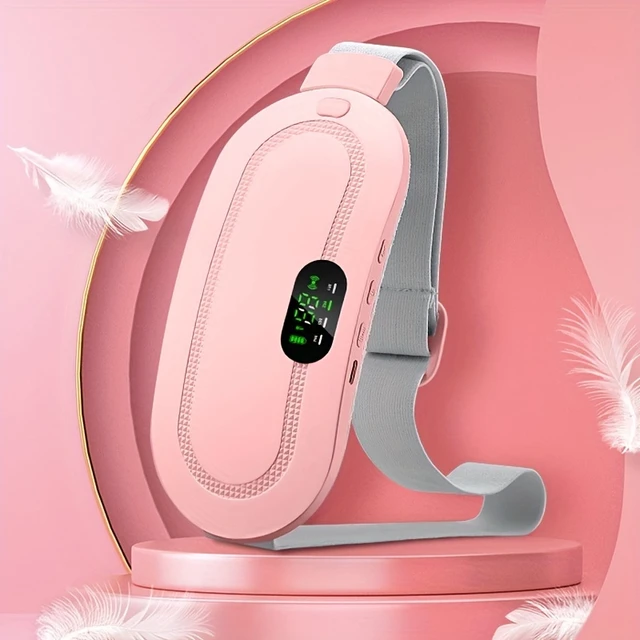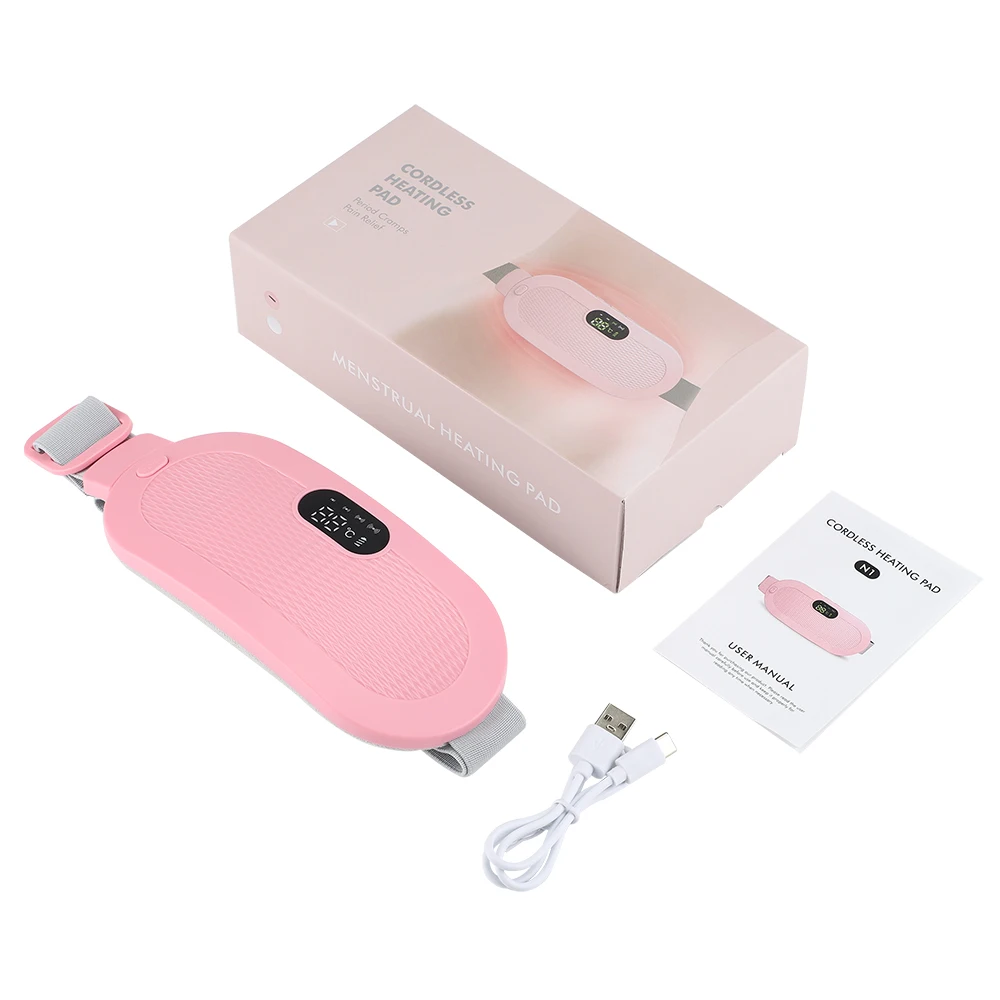Introduction
Menstrual cramps, also known as dysmenorrhea, can cause discomfort and pain for many individuals during their menstrual cycle. While there are various methods to alleviate cramps, one popular and effective solution is the use of heating pads. Heating pads provide targeted heat therapy, which can help relax muscles, reduce pain, and improve blood circulation in the affected area. In this guide, we will explore the benefits of using heating pads to relieve cramps. From the mechanism of action to tips for optimal use, we will provide specific details on how heating pads can provide relief during this challenging time.

Does a heating pad help with cramps?
Understanding Menstrual Cramps
1.1. What Are Menstrual Cramps?
Menstrual cramps are caused by the contraction of the uterus as it sheds its lining during menstruation. These contractions can lead to pain and discomfort, ranging from mild to severe, and can be accompanied by other symptoms such as bloating, fatigue, and mood changes.
1.2. Primary vs. Secondary Cramps
Menstrual cramps can be categorized as primary or secondary. Primary cramps are normal and typically occur in the absence of any underlying medical conditions. Secondary cramps, on the other hand, are caused by an underlying condition such as endometriosis or fibroids.
How Heat Therapy Works
2.1. Relaxation of Muscles
Applying heat to the abdominal area helps relax the muscles of the uterus, reducing the intensity and frequency of contractions. This relaxation can provide relief from cramps and lessen the associated pain.
2.2. Improved Blood Circulation
Heat therapy promotes blood circulation in the affected area. Increased blood flow brings oxygen and nutrients to the muscles, helping them relax and reducing pain.
2.3. Reduction of Pain Signals
Heat has the ability to block the transmission of pain signals to the brain, providing a soothing effect and diminishing the perception of pain.

Benefits of Using Heating Pads for Cramps
3.1. Natural and Non-Invasive
Heating pads offer a natural and non-invasive method for managing menstrual cramps. They do not involve the use of medications or invasive procedures, making them a safe option for most individuals.
3.2. Targeted Heat Therapy
Heating pads provide targeted heat therapy, allowing individuals to apply heat directly to the area of discomfort. This focused approach helps concentrate the therapeutic benefits and provides localized relief.
3.3. Relaxation and Comfort
The warmth provided by heating pads can create a relaxing and comforting sensation, which can have a positive impact on mood and overall well-being during the menstrual cycle.
3.4. Cost-Effective
Compared to other methods of pain relief, heating pads are generally more affordable and offer long-term use without additional costs.
Types of Heating Pads
4.1. Electric Heating Pads
Electric heating pads are powered by electricity and come in various sizes and shapes. They typically offer adjustable temperature settings and automatic shut-off features for safety.
4.2. Microwavable Heating Pads
Microwavable heating pads are filled with materials that can be heated in a microwave. They provide a cordless option for heat therapy and are reusable.

4.3. Chemical Heating Pads
Chemical heating pads contain chemicals that produce heat when activated. These pads are disposable and often come in the form of adhesive patches that can be attached to the skin.
Tips for Using Heating Pads
5.1. Proper Application
Place the heating pad directly on the lower abdomen or lower back, depending on where the cramps are localized. Ensure that the pad covers the entire area of discomfort for maximum effectiveness.
5.2. Optimal Temperature
Start with a lower temperature setting and gradually increase it until you find the level of heat that provides the most relief. Be cautious not to exceed a comfortable temperature to avoid burns or skin irritation.
5.3. Duration of Use
Use the heating pad for 20 to 30 minutes at a time, or as recommended by your healthcare provider. Take breaks between sessions to allow the skin to cool down.
5.4. Safety Precautions
Follow the manufacturer’s instructions and safety guidelines provided with the heating pad. Be mindful of any skin sensitivities or allergies, and discontinue use if any adverse reactions occur.

Other Self-Care Techniques for Cramps
6.1. Gentle Exercise
Engaging in low-impact exercises such as walking, stretching, or yoga can help alleviate cramps by improving blood circulation and releasing endorphins, the body’s natural painkillers.
6.2. Relaxation Techniques
Practicing relaxation techniques such as deep breathing, meditation, or taking warm baths can help reduce stress and muscle tension, providing relief from cramps.
6.3. Over-the-Counter Pain Medications
Over-the-counter nonsteroidal anti-inflammatory drugs (NSAIDs), such as ibuprofen or naproxen, can be effective in reducing menstrual cramp pain. Consult with a healthcare provider before using any medication.
6.4. Warm Beverages and Herbal Teas
Sipping warm beverages and herbal teas, such as chamomile or ginger tea, can help relax the body and provide mild pain relief.
When to Consult a Healthcare Provider
7.1. Severe or Debilitating Pain
If your menstrual cramps are severe, persistent, or significantly impacting your daily activities, it is important to consult a healthcare provider. They can evaluate your symptoms, rule out any underlying conditions, and recommend appropriate treatment options.
7.2. Unusual Symptoms or Concerns
If you experience new or concerning symptoms during your menstrual cycle, such as heavy bleeding, irregular periods, or severe mood swings, it is advisable to seek medical advice.
Additional Considerations
9.1. Personal Preferences
Every individual may have different preferences when it comes to managing menstrual cramps. While heating pads are generally effective, some individuals may find alternative methods more suitable for their needs. It is important to explore different options and find what works best for you.
9.2. Combination Therapy
Using heating pads in combination with other self-care techniques, such as exercise, relaxation techniques, or over-the-counter pain medications, can provide enhanced relief. Consider incorporating multiple approaches to find a comprehensive solution for managing menstrual cramps.
9.3. Timing and Consistency
Using a heating pad consistently and starting treatment at the onset of cramps can improve effectiveness. It is generally recommended to begin using a heating pad a day or two before the expected start of your period to preemptively address cramps.
9.4. Medical Advice
If menstrual cramps significantly impact your quality of life, it is essential to seek medical advice. A healthcare provider can evaluate your symptoms, provide a diagnosis, and offer additional treatment options tailored to your specific needs.

Conclusion
Heating pads are a valuable tool for managing menstrual cramps. By providing localized heat therapy, heating pads help relax muscles, improve blood circulation, and reduce pain associated with cramps. They offer a natural, non-invasive, and cost-effective approach to pain relief. Whether using electric, microwavable, or chemical heating pads, it is important to follow the recommended guidelines for application and duration of use. Remember to consult a healthcare provider if you have severe or persistent cramps or any other concerns related to your menstrual cycle. With the comforting warmth of a heating pad, individuals can find relief and comfort during this natural part of their reproductive health journey.

